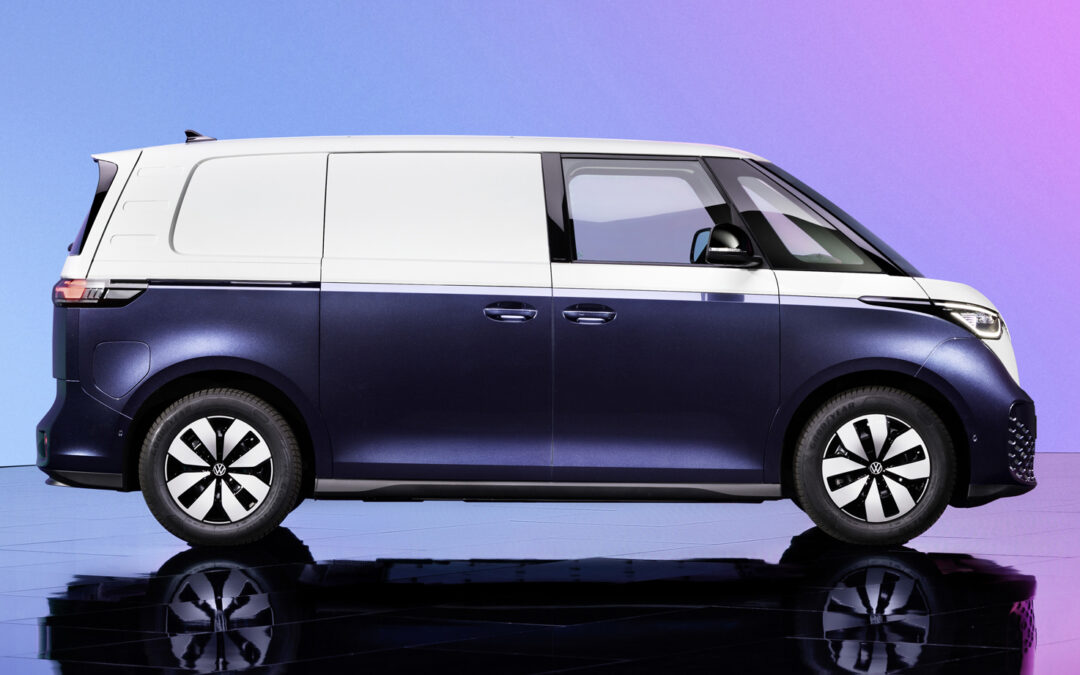GBU special: electric vans
Top 10 electric vans
Does the mighty Ford Transit still rule the roads now that delivery drivers are going electric?
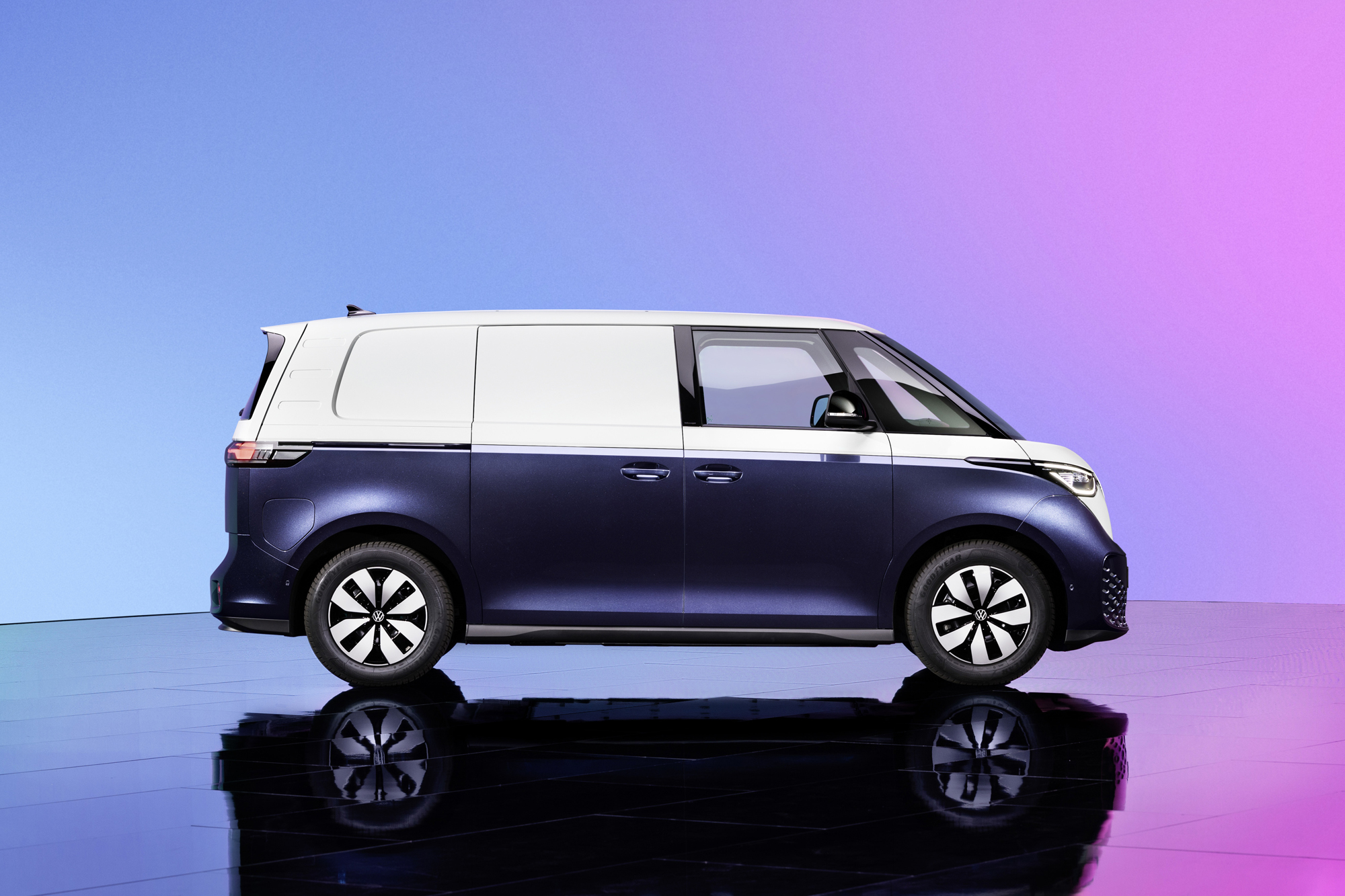
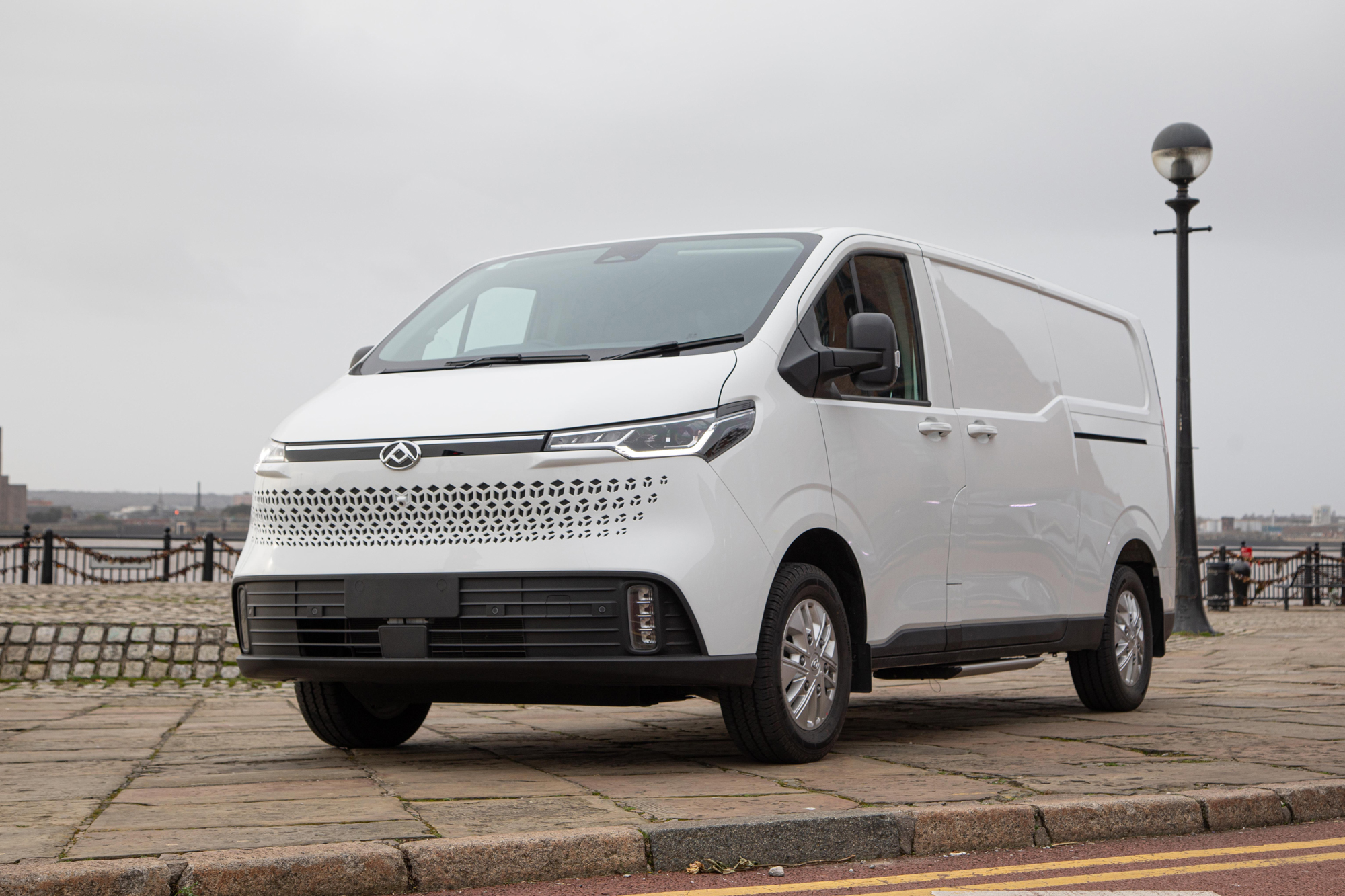
10
Maxus eDeliver 7
THE GOOD: A left-field choice from a brand that is growing all the time
THE BAD: The on-board kit is fiddly and annoying
THE UGLY: It lacks the big-brand recognition or back-up of the mainstream manufacturers
NEED TO KNOW: Maxus is on the up and up, releasing new vans all the time, most of them electric. The eDeliver 7 is a medium-sized model that is up against the likes of the Ford E-Transit Custom. It’s a million miles removed from the smaller eDeliver 3 with which the Chinese brand took its first steps into the UK market. It can’t hide all of its budget roots, and there are some oddities in and around the cabin, but it is a solid van with a great level of kit.
KEY DATA: Range 230 miles; efficiency 2.3 miles per kWh; max DC charging 43 minutes 20-80%; priced from £44,995 excl VAT
THE ONE TO BUY: Maxus keeps things dead simple trim wise so it’s just a case of choosing between two very similar batteries. Go for the bigger one
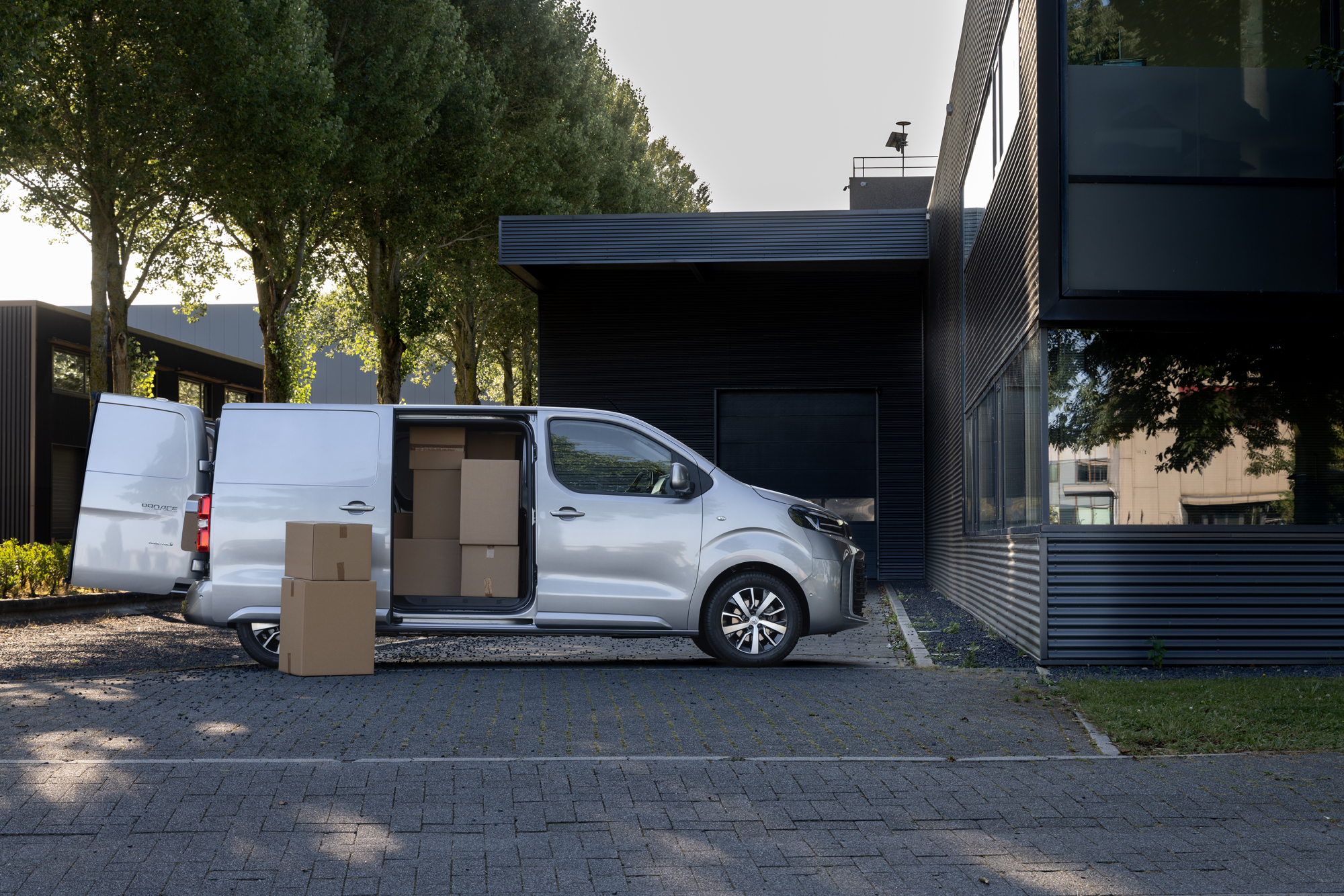
9
Toyota Proace Electric
THE GOOD: The best of the Stellantis medium vans, despite Toyota not being a Stellantis brand
THE BAD: There’s only one height on offer, although it will squeeze under most urban barriers
THE UGLY: The driving position is offset and won’t suit everyone
NEED TO KNOW: The Proace is a not-Toyota Toyota, as it’s basically the same van as the Citroën Dispatch, Fiat Scudo, Peugeot Expert and Vauxhall Vivaro. The others might pip it sales wise, and you could argue a case for any of them being in our top 10, except that the Toyota comes with an industry-leading 10-year warranty. The electric element is decent, but there isn’t as much choice when it comes to the body shapes as there is in other medium vans.
KEY DATA: Range 213 miles; efficiency 2.8 miles per kWh; max DC charging 45 minutes 0-80%; priced from £28,816 excl VAT
THE ONE TO BUY: Toyota’s simple range approach means there is only the one battery. Mid-spec Icon is where you get the clever Smart Cargo system, though
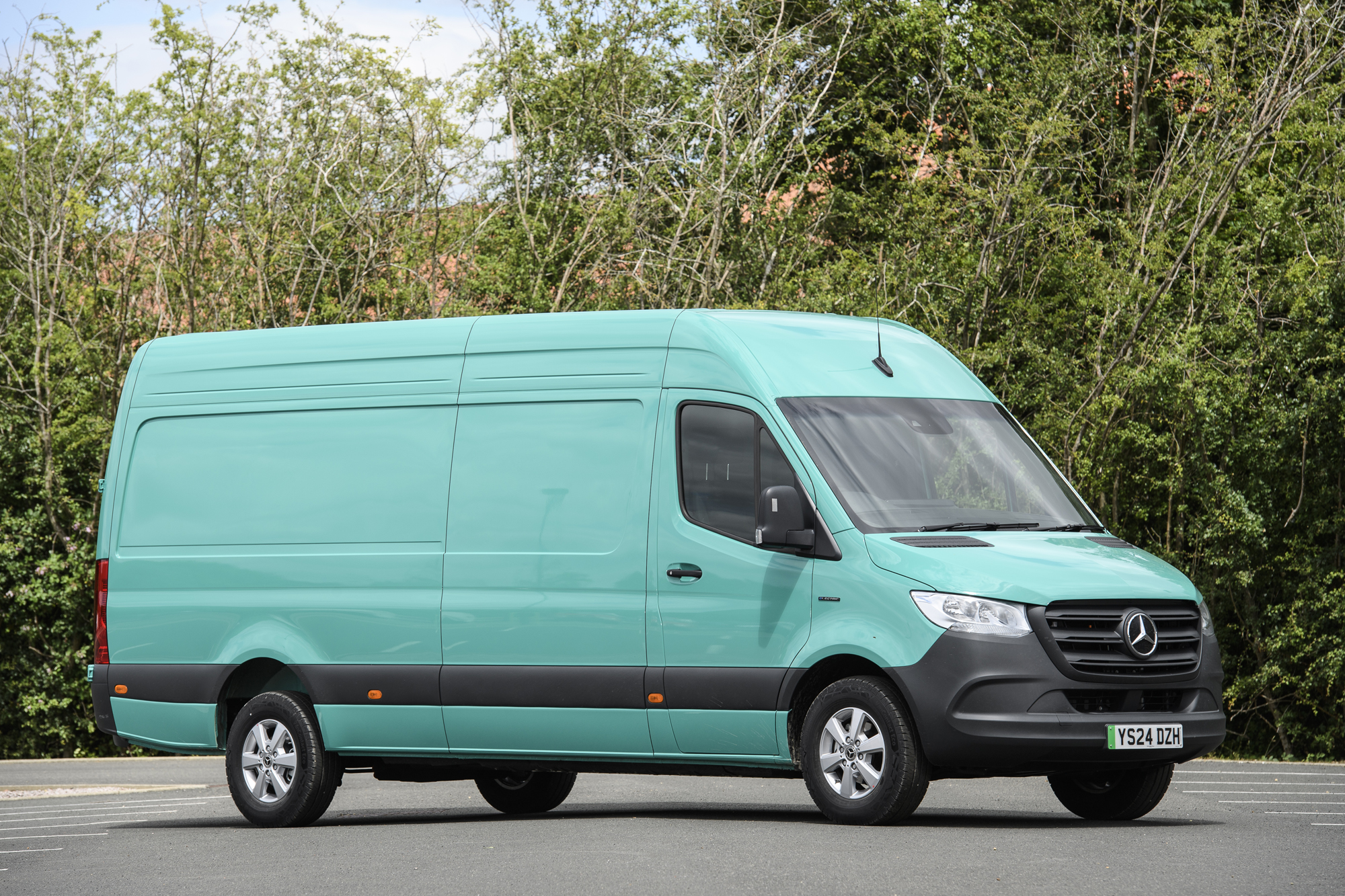
8
Mercedes-Benz eSprinter
THE GOOD: Big van gets an enormous battery, which means a good electric range
THE BAD: It’s easy to get carried away with the configuration and make this a pricey purchase
THE UGLY: That big battery weighs a lot, which makes this a heavy, and large, van
NEED TO KNOW: The Sprinter is a great large van but the electric version felt like it came up short – until the 2024 update, that is. This brought about a frankly huge new battery – a 113kWh unit is the headline offering, but a smaller 81kWh is on the way too. It’s just as well, as that bigger battery pushes the gross vehicle weight up to 4.25 tonnes and it’s only available on the longest version. The 2024 facelift smartens things up in the cabin, too, making the latest model feel like it is worthy of that badge.
KEY DATA: Range 272 miles; efficiency 2.2 miles per kWh; max DC charging 32 minutes 10-80%; priced from £58,740 excl VAT
THE ONE TO BUY: This is your pick if range is paramount and you have had the training that lets you drive a bigger van
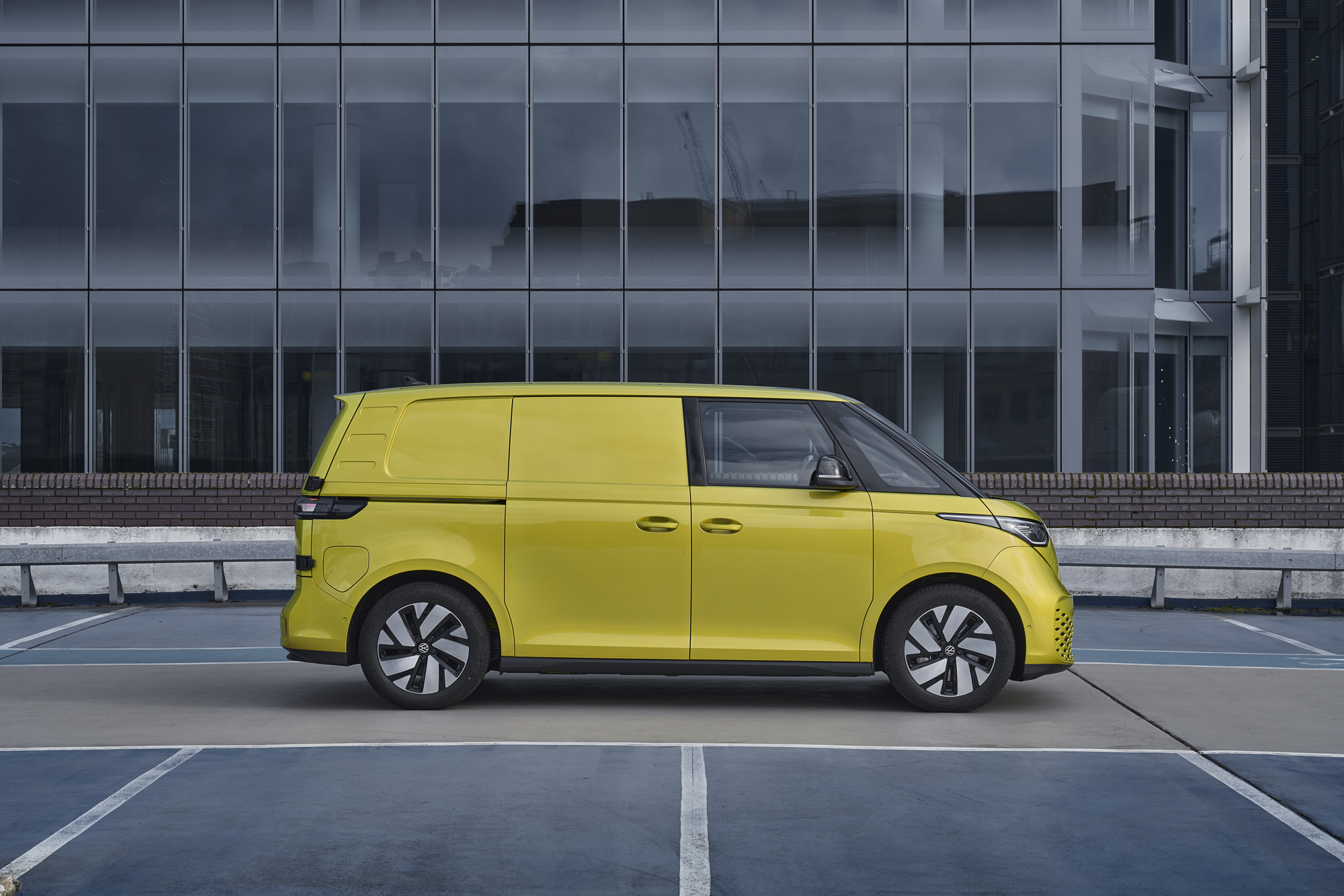
7
VW ID. Buzz Cargo
THE GOOD: The ID. Buzz makes vans cool – it’s dripping with retro styling features and a modern cabin
THE BAD: You can get better value for money from a less trendy rival
THE UGLY: It might be big on the outside but smaller rivals offer more space and a bigger payload
NEED TO KNOW: The ID. Buzz can’t be accused of being shy and retiring. It leans heavily into VW’s heritage, with styling that is inspired by the old-school campers from the 1960s and ’70s. It drives nicely, has a smart modern cabin and a decent electric range. Granted there are more affordable options that can carry more in terms of volume and weight, but what price looking and feeling like you’re heading down to the beach rather than the trade depot?
KEY DATA: Range 276 miles; efficiency 3.2 miles per kWh; max DC charging 30 minutes 5-80%; priced from £58,740 excl VAT
THE ONE TO BUY: You might as well go all in and get the higher-spec Commerce Plus – that brings the body-coloured bumpers and 19-inch alloy wheels
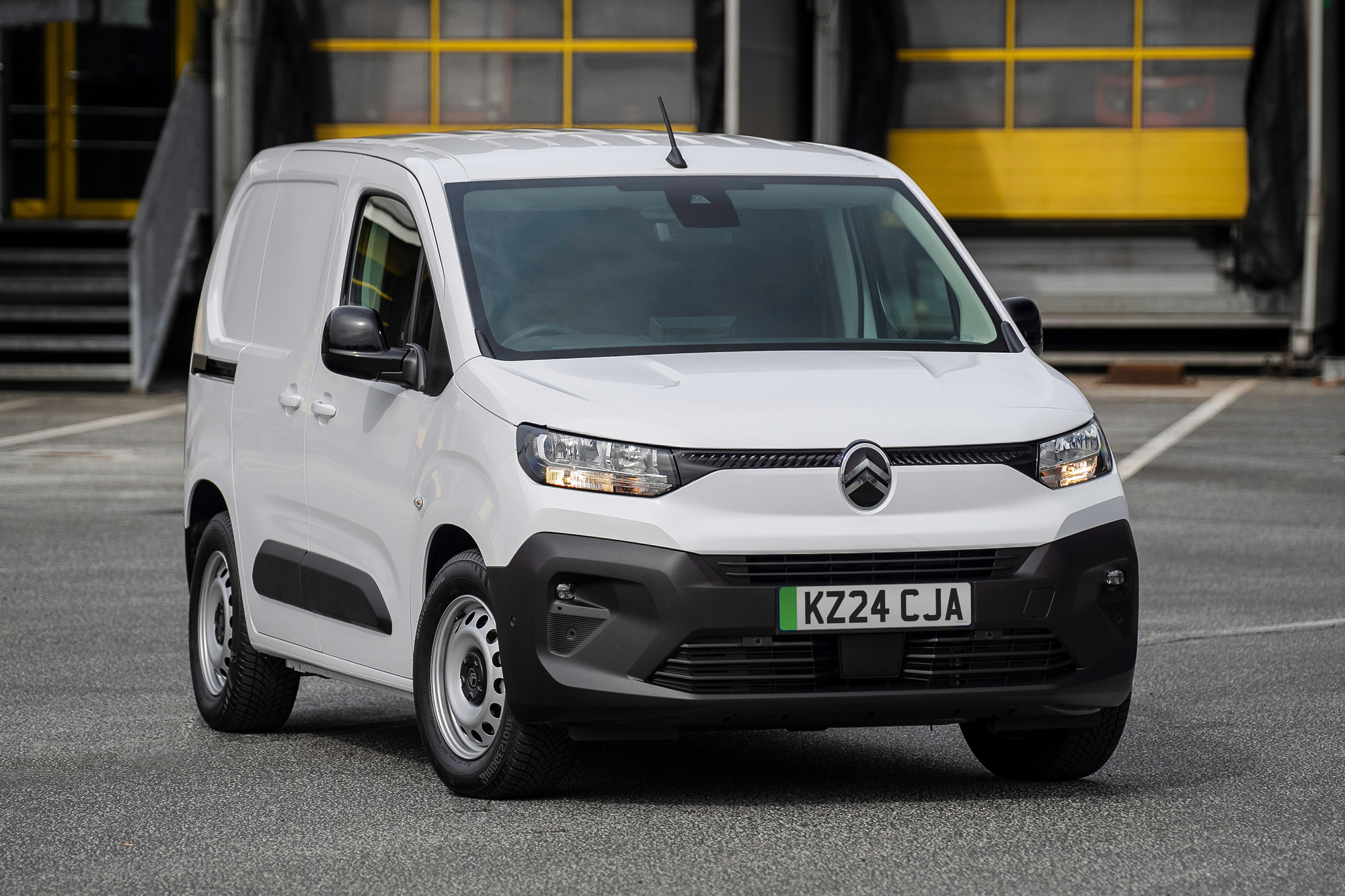
6
Citroën e-Berlingo/Peugeot E-Partner/Fiat E-Doblo/Vauxhall Combo Electric
THE GOOD: These small vans take the idea of a load-through hatch that step further as you can fold down the front passenger seat to stick longer items into the cabin
THE BAD: The crew van side doors don’t have windows
THE UGLY: The Peugeot Partner has that silly iCockpit with the small steering wheel. Some like it, others definitely don’t
NEED TO KNOW: This quartet of vans are even more like one another than the Renault/Mercedes/Nissan trio lurking at #4. This is fine, though, as they are all great to drive, easy to live with and have a strong balance of payload and electric range. They were starting to show their age a little but a big 2024 facelift jazzed them all up and given a bump to the battery capabilities.
KEY DATA: Range 205 miles; efficiency 4.2 miles per kWh; max DC charging 30 minutes 0-80%; priced from £26,505 excl VAT
THE ONE TO BUY: There’s so little to choose between these variations on a theme, you might as well go for the one that has a dealer closest to you. Or if you like safety in numbers, the Citroën is the biggest seller
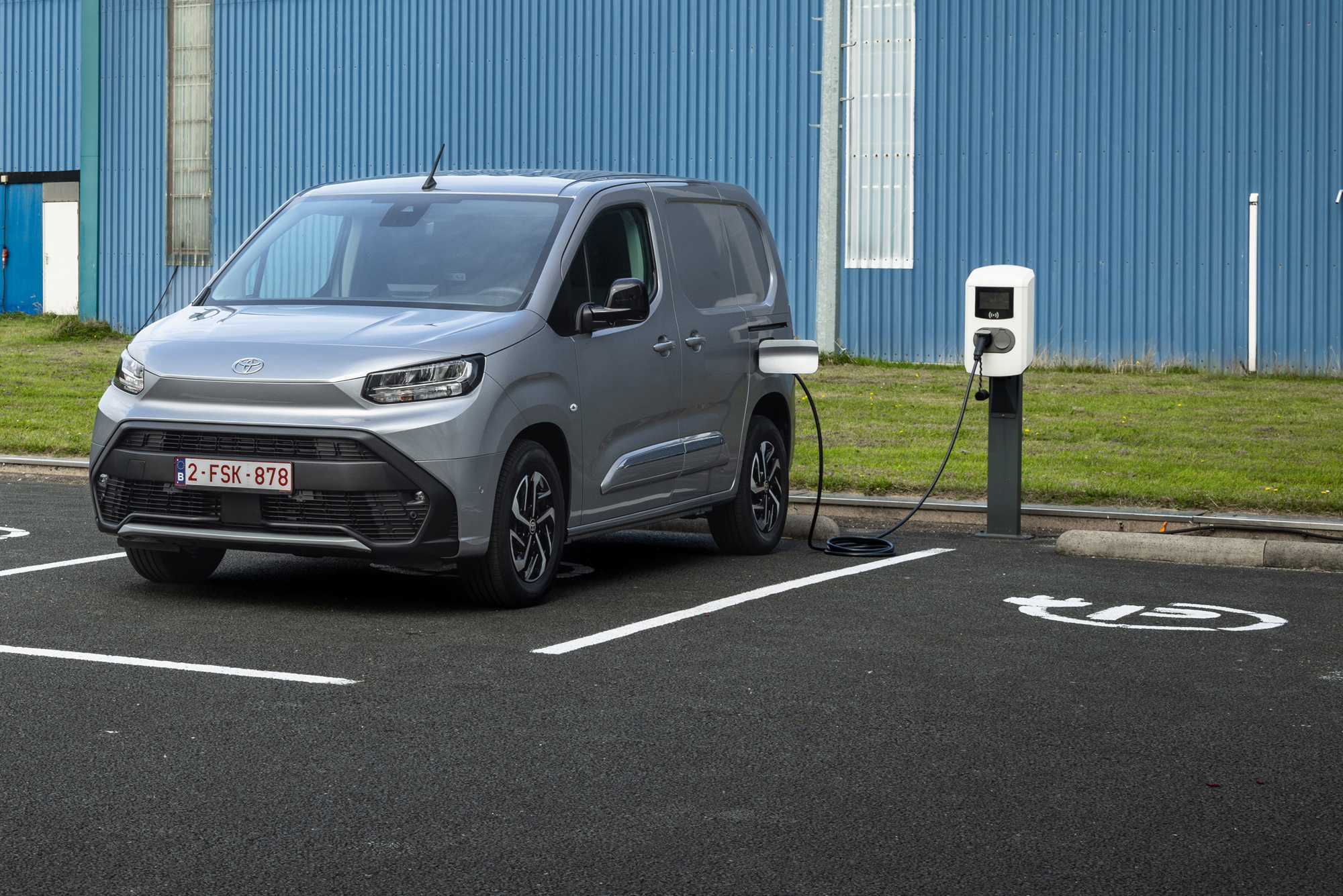
5
Toyota Proace City Electric
THE GOOD: Pretty much the same as the impressive Stellantis quartet at #6, but with a vastly better warranty
THE BAD: There’s no crew van version available
THE UGLY: More kit than its cousins, resulting in a higher list price
NEED TO KNOW: Toyota isn’t part of the Stellantis family, but it’s done a deal to rebadge the group’s small electric van as a Proace City. The fundamental van is the same as the Citroën Berlingo et al, but with one notable difference that makes it the one you should go for – the stonking 10-year warranty that Toyota offers. It doesn’t mean that this version will be any more or less reliable than the others, but you’ll get looked after for longer if something does go wrong.
KEY DATA: Range 213 miles; efficiency 4.3 miles per kWh; max DC charging 30 minutes 0-80%; priced from £30,474 excl VAT
THE ONE TO BUY: There’s no entry-level version as there is on the diesel, so you’re good to go with any of them. Stick with the Icon for the best value
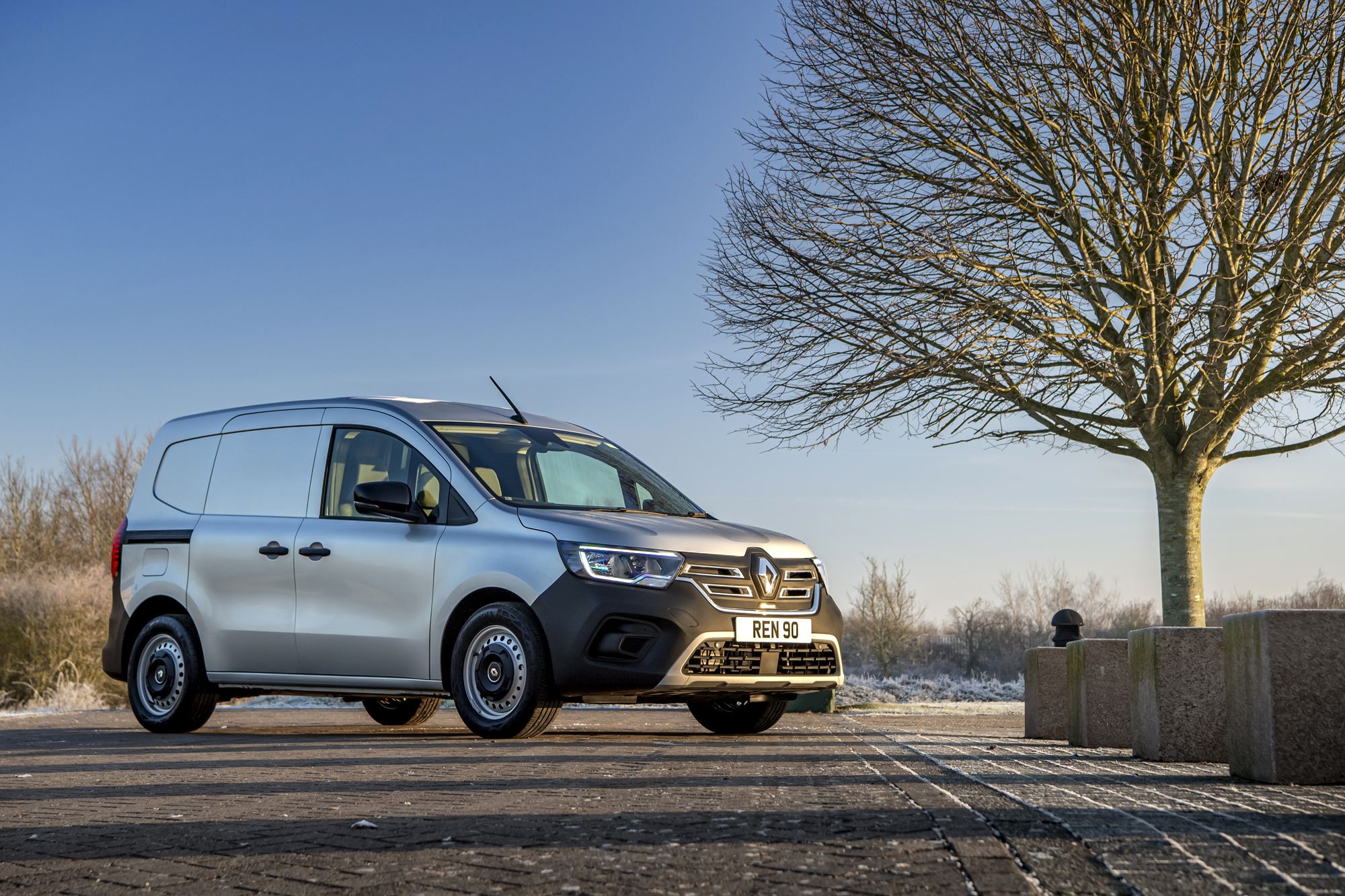
4
Renault Kangoo E-Tech/Mercedes eCitan/Nissan Townstar
THE GOOD: Three small electric vans, all as good as each other
THE BAD: Tricky buying choice
THE UGLY: The left-hand-drive models get more clever kit that we Brits aren’t allowed
NEED TO KNOW: The Renault Kangoo was the original small electric van, and the second generation moved the game on a fair bit when it launched in 2022, having been designed to be electric from the outset. There are some handy features – rapid charging as standard, for example – but it’s all a bit ordinary as a small van in some ways. There aren’t many fundamental differences between the three – the Merc adds a bit more plushness to the cabin but that’s about it. The Renault edges it on having more kit.
KEY DATA: Renault Kangoo E-Tech Advance gets all the kit you’d need, but if you want to seat three across the front then you’ll need the Extra trim
THE ONE TO BUY: Range 186 miles; efficiency 4.2 miles per kWh; max DC charging 40 minutes 20-80%; priced from £29,850 excl VAT

3
Ford E-Transit
THE GOOD: The best conversion of an existing big van, with price and performance on its side
THE BAD: A long range means going for a big battery with payload compromises
THE UGLY: It’s got some strange brake regeneration settings
NEED TO KNOW: The E-Transit came with the interesting claim of being the most powerful van ever when it launched. While this doesn’t turn it into a performance van, it does mean it doesn’t feel as starched-shirt-sensible as some of its similarly sized rivals. Everything feels very smoothly slotted in, given that this started as a diesel van that was converted to run on batteries. The only notable oddity is the really strange method of engaging the brake regeneration – you have to tap the brake pedal rather than getting a simple button on the dash. Ford’s added a bigger 89kWh battery version, too, taking the maximum range up to 249 miles.
KEY DATA: Range 249 miles; efficiency 2.8 miles per kWh; max DC charging 34 minutes 10-80%; priced from £50,695 excl VAT
THE ONE TO BUY: The Trend trim is the more enticingly well equipped, but there’s no real need to go for all that extra power – the 187bhp version is more than enough
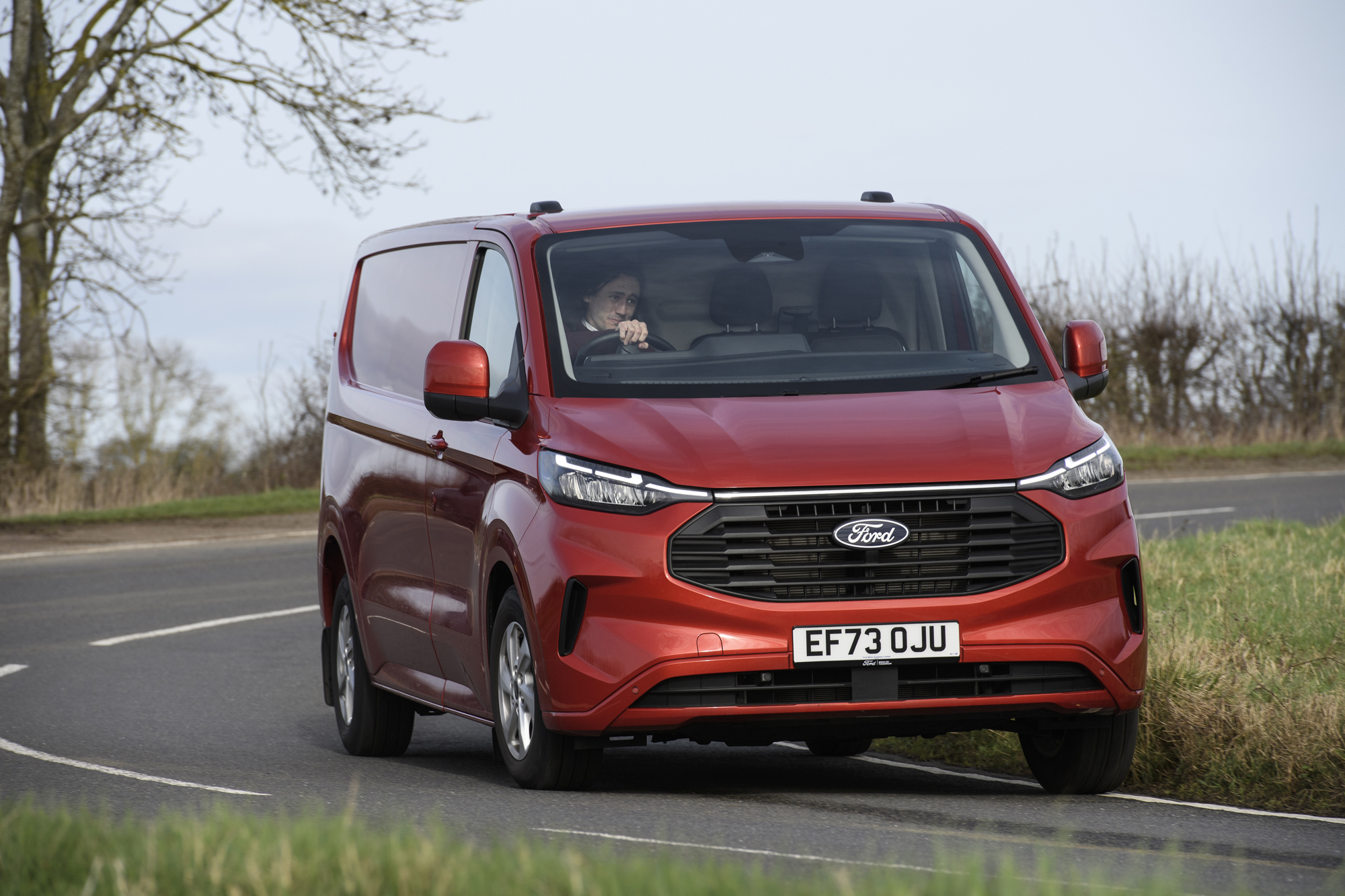
2
Ford E-Transit Custom
THE GOOD: Great to drive and feels seamlessly integrated
THE BAD: No base spec means the entry point is quite pricey
THE UGLY: Payloads of several versions dip below 1000kg
NEED TO KNOW: The Transit Custom is the king of the UK combustion-engined van sales charts, and it’s likely to be the best-selling electric van too. This version lives up to the stellar reputation of the rest of the range. It’s fantastic to drive, has a brilliantly practical cabin with some clever touches such as a flat floor and some clever body options, including one with an innovative L-shaped bulkhead. The only downside is the lack of basic, white-with-black-bumpers, lucky-if-you-get-air-con entry-level version, which means it starts at a higher price point than the diesel.
KEY DATA: Range 209 miles; efficiency 2.8 miles per kWh; max DC charging 39 minutes 10-80%; priced from £43,380 excl VAT
THE ONE TO BUY: There’s loads of kit on the E-Transit Custom, so we’d stick to the Limited rather than getting carried away. The MS-RT version doesn’t add much to justify it over the standard model
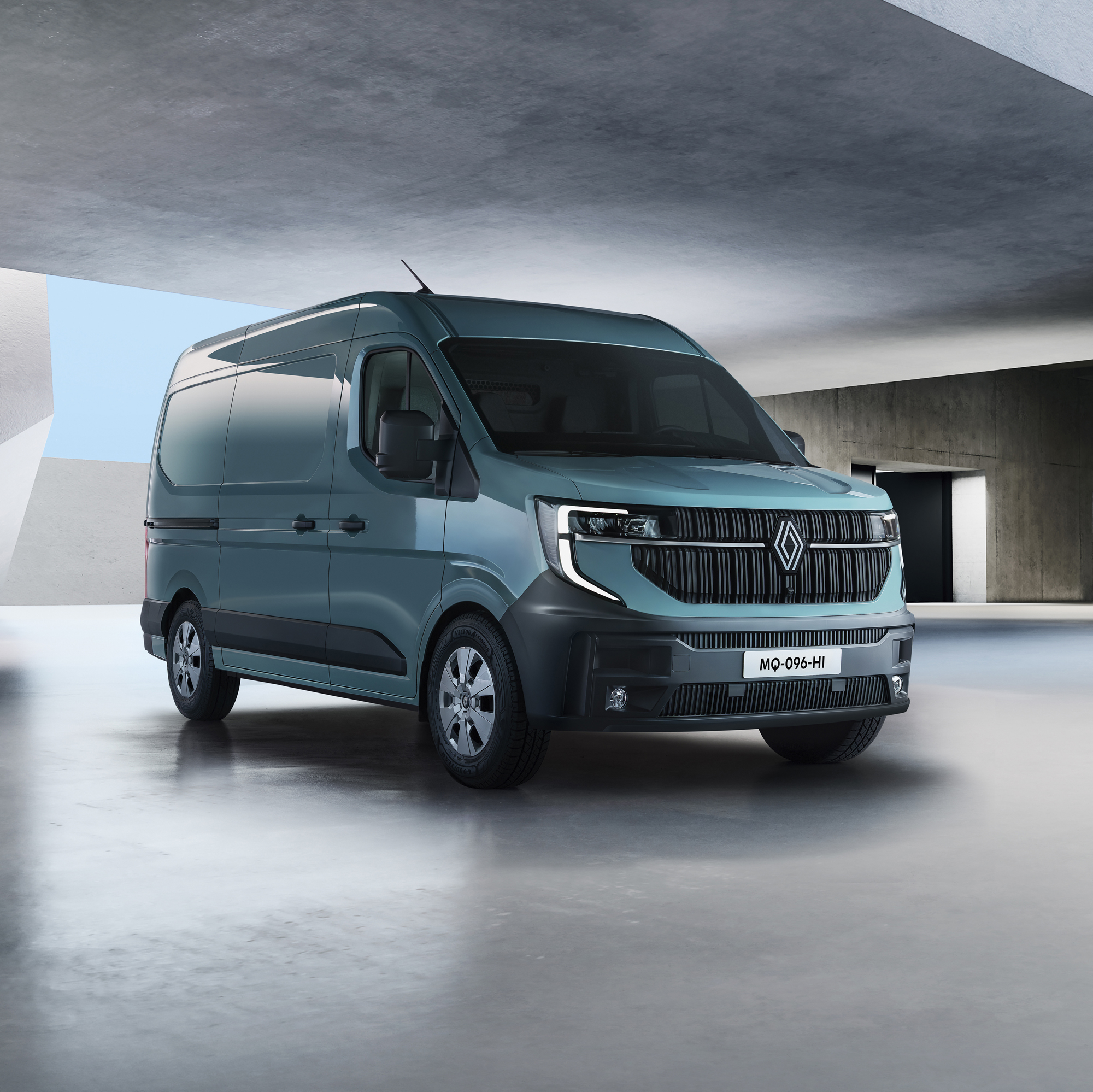
1
Renault Master E-Tech
THE GOOD: Rides and drives well, a strong payload/electric range combo, clever aerodynamics
THE BAD: Hasn’t got loads of eco drive modes, a bit slow
THE UGLY: A physical parking brake lever is a rarity in diesel vans, let alone an electric one
NEED TO KNOW: Brand new vans don’t come around that often, so the new Renault Master E-Tech is a welcome arrival and a huge step forward from the outgoing model, which was a long way shy of the competition. No such fear with this version, though, which sets new standards for large electric vans. An electric range of 285 miles is as good as it gets in the class. The aerodynamic cleverness means that this is possible from a comparatively lightweight and compact 87kWh battery, leaving more room for carrying stuff in the back.
KEY DATA: Range 285 miles; efficiency 3.3 miles per kWh; max DC charging 70 minutes 0-100%; priced from £42,500
THE ONE TO BUY: Only one trim makes choosing simple, so go for the size you need

